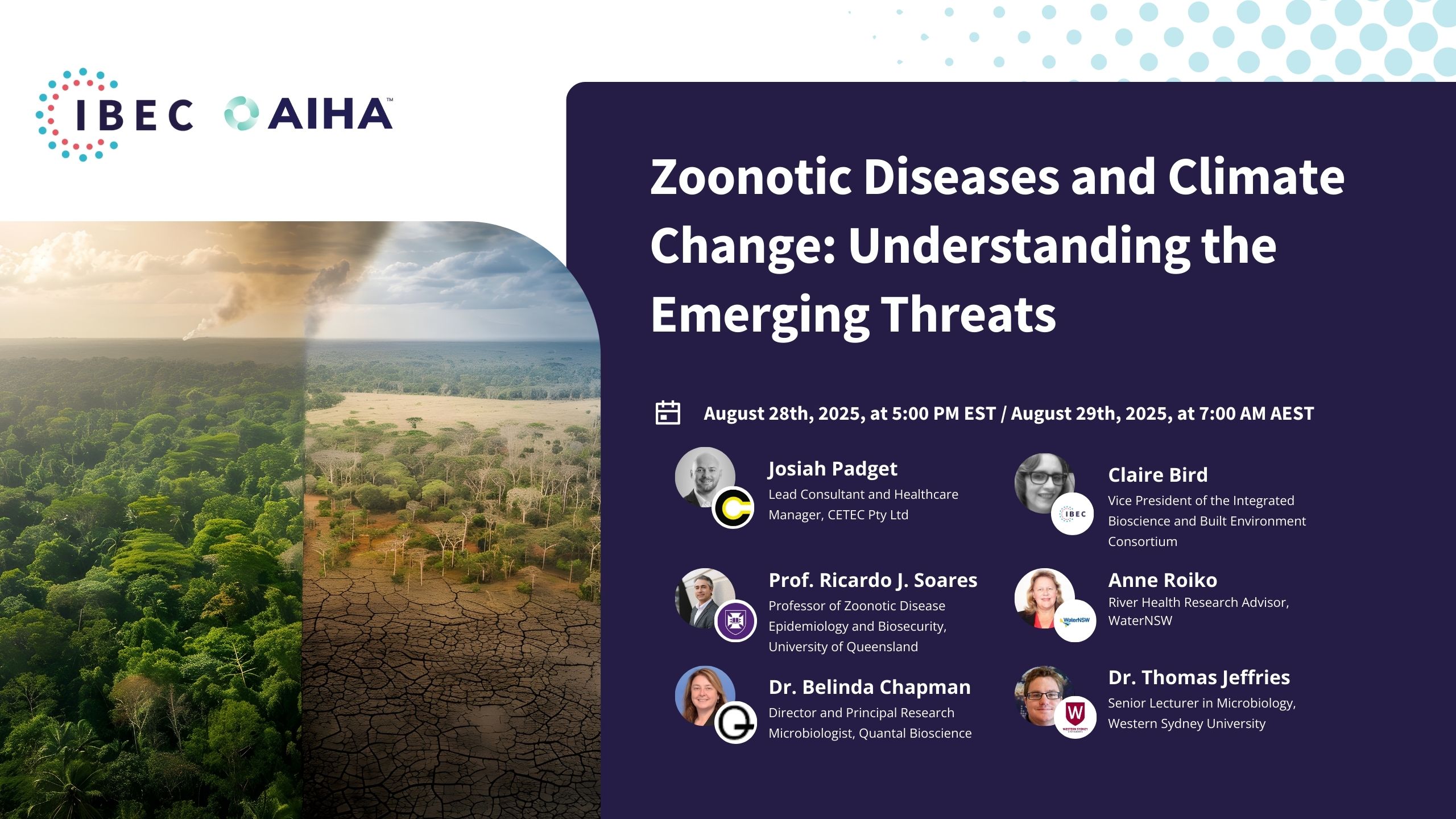IBEC Takes the Lead in Developing a Framework for Reducing Indoor Pathogen Transmission
Dear IBEC Partners and Supporters,
As we continue to navigate the ongoing threat of airborne pathogens transmission in our shared indoor communities, it’s more important than ever to recognize the importance of developing consensus driven frameworks for considering how to address airborne pathogen transmission in the built environment. At IBEC, our goal is to improve indoor air quality and ultimately create healthier environments to to reduce the risk of disease transmission indoors.
As we look across the policy and standards landscape in the U.S., we’re seeing the National Institute of Science and Technology releasing a comprehensive new standards strategy for critical and emerging technology. This effort will impact broad sectors of U.S. businesses and industries. The standards strategy released in early May by White House will set the expectations and parameters for years to come and will hopefully drive innovation and implementation towards efforts that benefit our nation and the world.
Despite the lessons learned from the COVID-19 pandemic, comprehensive frameworks and enforceable standards for reducing indoor airborne pathogen transmission still haven’t been developed in the US or elsewhere. Groups like the American Society of Heating, Refrigeration, and Air Conditioning Engineers appear to be working on standards that will affect individual aspects of airborne pathogen transmission in the built environment.
However, the reality is that many factors including human behavior, building age, alternative interventions, and community health all weigh heavily on airborne pathogen transmission. That’s why IBEC is taking the lead in bringing together experts from across industries focused on building design and operation, indoor air quality, and pathogen transmission to develop an operational framework for Reducing Indoor Pathogen Transmission.
We’re proud to announce that we will begin hosting working group meetings to develop the framework in the coming weeks, and we’re confident that it will play a significant role in improving indoor air quality and reducing the spread of airborne pathogens.
We encourage you to stay tuned for updates from IBEC as we continue to develop and refine our framework. If you are interested in participating in the working groups who will be leading this effort, please reach out.
Best regards,
Coby Gierke
Executive Director
Integrated Bioscience and Built Environment Consortium (IBEC)
406 370 9868
cobyg@weareibec.org
weareibec.org
Related Blogposts
COVID 19 Crisis Response, Mental Fatigue & Resilience
This is an extract from our October CLEAN Lessons Learned session “Reducing Exposure to COVID-19: The Human Factors” where Dr. Melissa Marot gave a presentation…
Beyond COVID-19
Strategies to go beyond COVID-19 with Dr. Lidia Morawska.
- « Previous
- 1
- 2
- 3



